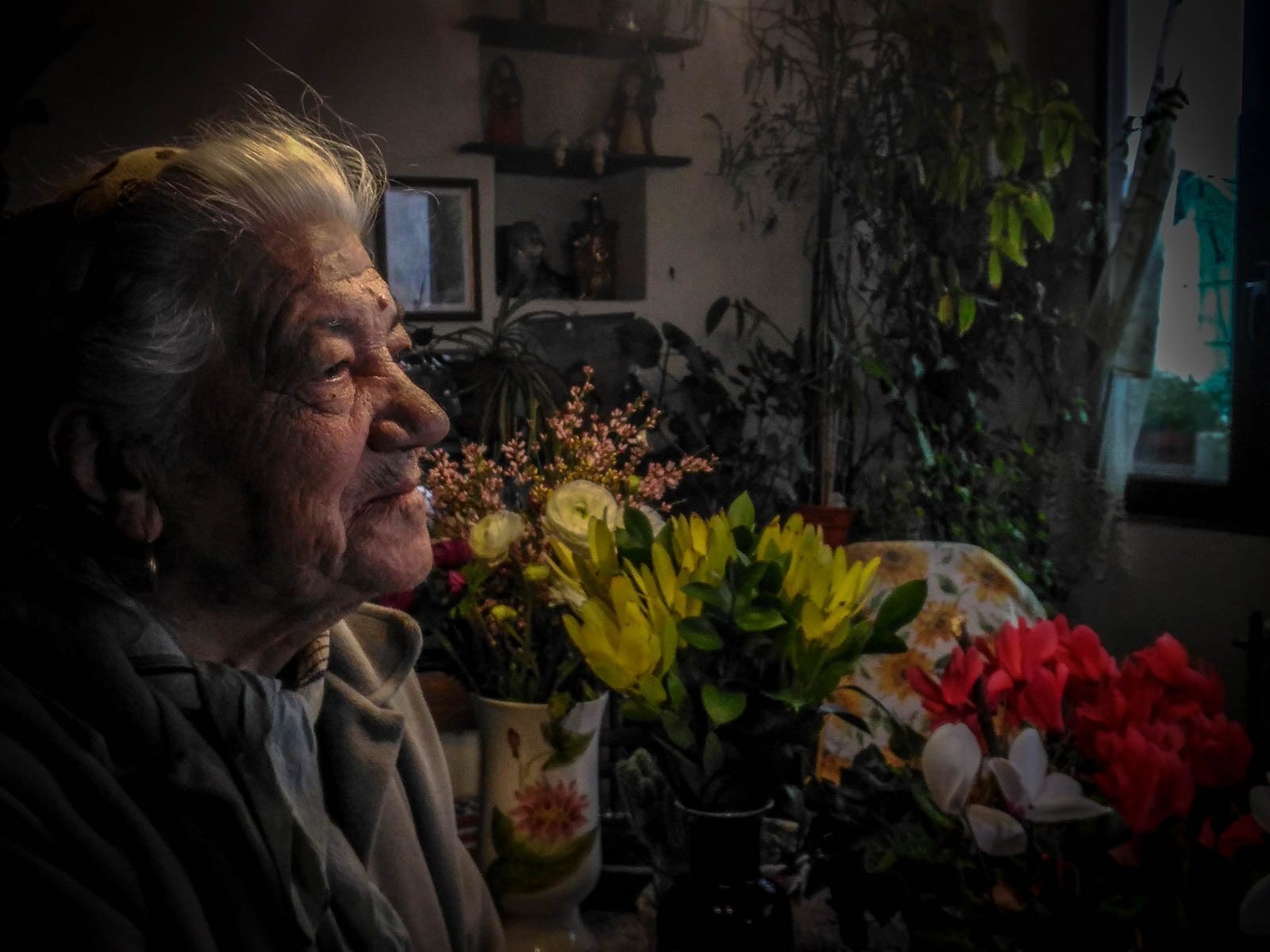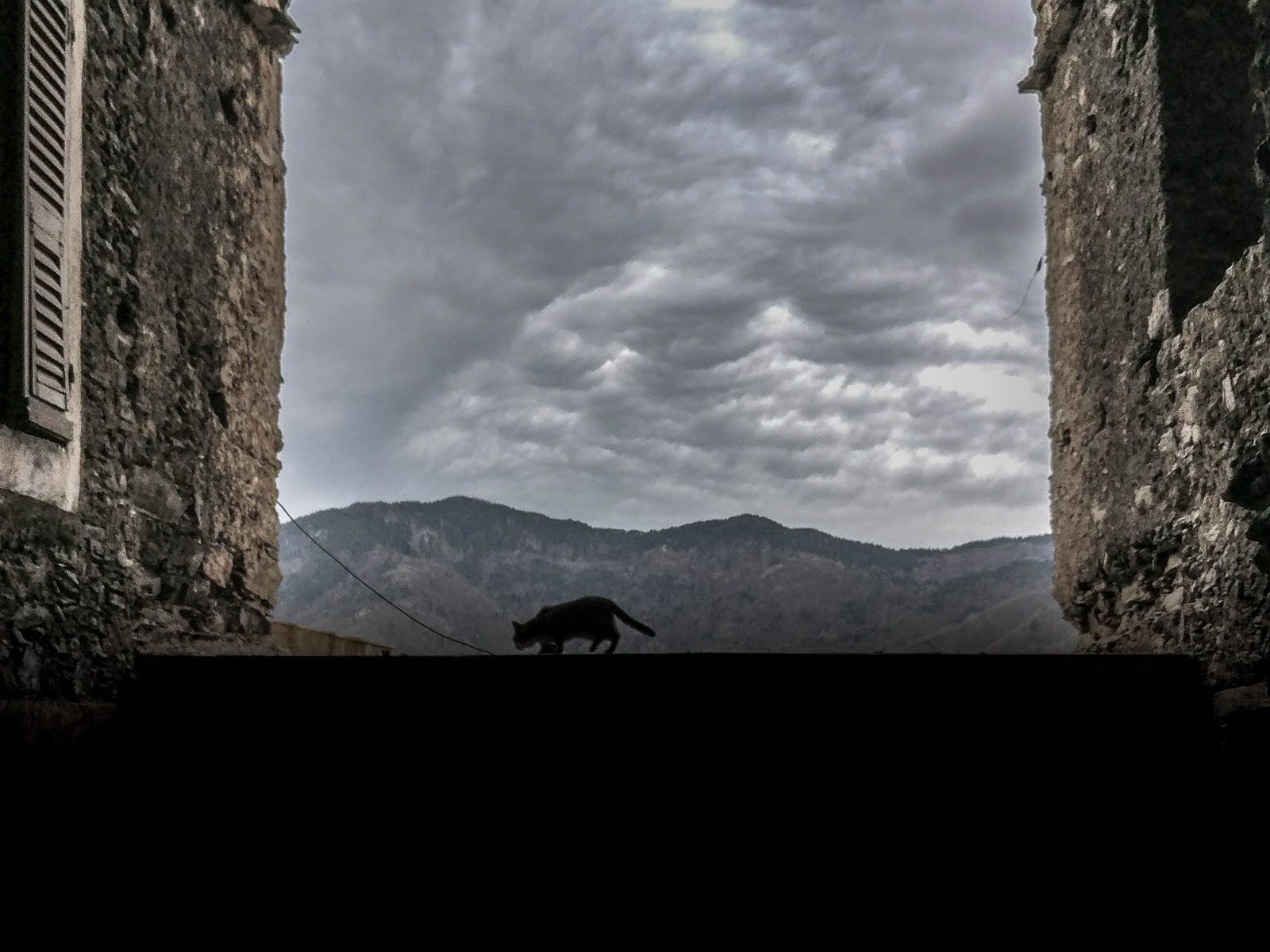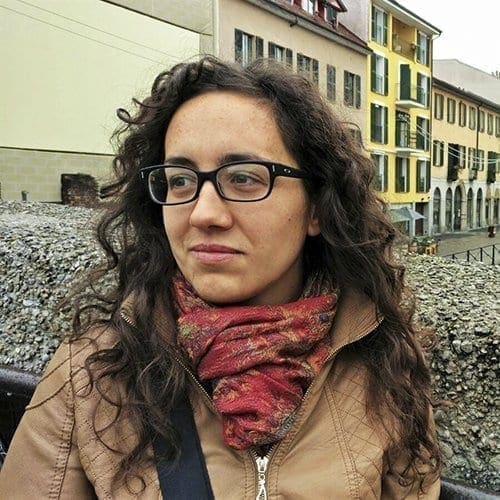From the attic window, the wooded slopes of the Argentina Valley fade into the mist of a grey early April afternoon. We are in the Ligurian hinterland, close to the border with France: a land of villages perched like eagle’s nests, of bell towers whose chimes chime from slope to slope, of superstitions that acquire more and more weight as we leave behind the familiar civilisation, the shopping centres, the railways. Mists, silences, and hairpin bends remain. Legends, too.
From up here, Triora is a tangle of reddish-grey roofs. In the distance, on the other side of the valley, a clump of houses rips the blue-green of the forest. «That’s Galè – Antoinette points, her gnarled hand brushing against the condensation-dulled glass – and beyond that coast is Cetta. And there, do you see the Loreto Bridge?». For 91-year-old Antonietta Chetta, the crumpled geography of these valleys is a simple matter, the names of the neighbouring hamlets as immediate as those of her children. Or of her herbs, which is the same thing.
Of herbs, evil eye and bàgiue in the village of witches
In the village of the witches – as Triora is called by the famous witchcraft trial that took place there between 1587 and 1589 – Antonietta is today the last heir of that lineage of peasant herbalists, of healing sorceresses that perhaps gave rise to local popular beliefs. Or, more likely, that each country has always had: girls, women, and older women who have learnt the art of caring thanks to teachings handed down from mother to daughter, from mother-in-law to daughter-in-law. A bit like doctors, sorceresses and psychologists, they arrived where official medicine did not come or arrived too late.
«These are mountain areas – explains Sandro Oddo, a former municipal employee of Triora, now retired and an expert in local folklore –people were not used to going to the doctor. But, especially in the most isolated villages in the valley, a person who was an expert on herbs was always present because if they had waited for the doctor to arrive… ».
In the book ‘La medicina popolare nell’alta Valle Argentina’ (Popular Medicine in the Upper Argentina Valley), Sandro has collected the curative traditions of the area and all the herbal knowledge usually handed down orally. A vast knowledge, if only because of the incredible variety of herbs and plants (first and foremost absinthe, which is very widespread) that characterise the place. «Decoctions, tisanes and liqueurs were used routinely in all homes. People here always cured themselves with what nature had to offer. And then there were some people who, although formally uneducated, had something different… An extra power».
Like Amalia Lanteri, who of the contemporary bàgiue was perhaps the most famous. Originating from the remote hamlet of Cetta (a spoonful of houses just beyond the Loreto bridge), it was known outside the valley’s borders for its close connection with ‘the world of the invisible’ and its ability to ward off bad luck.
Interpreters of fate and nature, capable of healing, removing the evil eye, or predicting the future, these women were perhaps witches (bàgiue, as they were called in the local dialect). But Amelia passed away a few years ago, and Antoinette, the last one left, shakes her head and says no, she is not a witch at all, «because I have always done good, I have never done bad things. You use prayers to heal». She prefers to be called a magician: it sounds less dangerous.

Mark fire, mark air
Born in 1928 into a farming family, Antonietta began using wild herbs at a very young age. In addition to the classic remedies to cure the most common ailments – spearmint root for kidneys, St. John’s Wort for burns, arnica for blows – she also learnt to ‘mark the fire’, i.e., practise the ancient folk ritual to heal the effects of burns.
«On the feast of St Benedict, in Taggia, they used to prepare fulguri, bamboo canes filled with powder to be used as torches – she recounts. – Once, one exploded in my sister’s face and burnt her, but Angiolina, the lady who knew how to stop the fire, was too old to come and help us, so she taught me how to do it. I learnt straight away. I was very young. Over the years, they also came from outside, even from France, to be treated by me. You have to draw a cross from top to bottom holding a wedding ring in your hand – she shows me the gesture – repeating the prayer three times, and the wounds close».
However, the procedure is different to make a draft pass: one has to get a small pot, boil some water, use salt and do a different prayer. But there is always the sign of the cross and the threefold repetition of the formula, at the end of which an empty cup must be tipped into the saucepan to ‘capture’ the air, removing the pain from the person who requested the rite. «I gladly teach these things to those who ask me – says Antoinette – because otherwise they will be lost when I die. Once, however, people believed in it more than now».
Lemon balm, Hawthorn, St. John’s wort
Antoinette spent her days in the countryside and the forest when she was young. She went mushrooming, gathered herbs, dried them, prepared decoctions and herbal teas, and sold them at stalls.
She shows me a black and white photograph of her with a basket of herbs resting on her head. Another photo, sidelong in the old frame, shows her in the company of her two baby goats.
There is nostalgia in the hands that caress the images: now Antoinette can no longer move from home. From the forests of the Argentina valley, her life has shrunk to two rooms, her flowers are those growing in pots in the attic, and the villagers provide her wild herbs, the few who still know how to recognise the most common ones: witch hazel or ‘herb of the Madonna’ (‘the herb for all ills’, explains Antonietta), lemon balm (‘relieves stress’), hawthorn, St John’s wort, also known as ‘fugademonium’, and so on.

She has been writing down all the remedies in a tiny hardcover notebook for some time now. On it, she has written the title “Le ricette di nonna Antonietta. Per curarsi con piante medicinali. Le erbe per fare le tisane” (Grandma Antoinette’s Recipes’ in the neat, tidy handwriting of yesteryear. To cure yourself with medicinal plants. Herbs for making herbal teas). So here are remedies for colds, stomach acidity, stomach ache, cystitis, high blood pressure, insect bites, insomnia, etc. She has advice for everything, Antonietta. Even for the evil eye, although she first specifies that she does not believe in it, the evil eye is just a reflection of weak people unable to react to life’s adversities. «But if it’s to calm them down, to make them feel less vulnerable, I recommend taking seven grains of rock salt and a clove of garlic and sealing them in a piece of cloth. Carrying this amulet helps».
She accompanies us down from her plant-filled shelter, and we return to the tiny kitchenette, warmed by a wood stove and cluttered with the memories of a lifetime. From here, the view has become more intimate: from the small window, we glimpse one of the narrow carrugi that characterise the village of Triora. Called back by Antonietta’s whistle, two sparrows perch on the windowsill, pecking at the seeds she prepares daily and then flying away very quickly. She smiles; you can tell that the sources are an established ritual. Perhaps she is lonely. «Once – she says – these were beautiful places, and the Argentina Valley was more populated. Now many things have changed. The villages have emptied, and only we old people are left. But that’s ok. What I can still do is tell. To teach what I know. When I’m gone tomorrow, at least it won’t all be lost».


